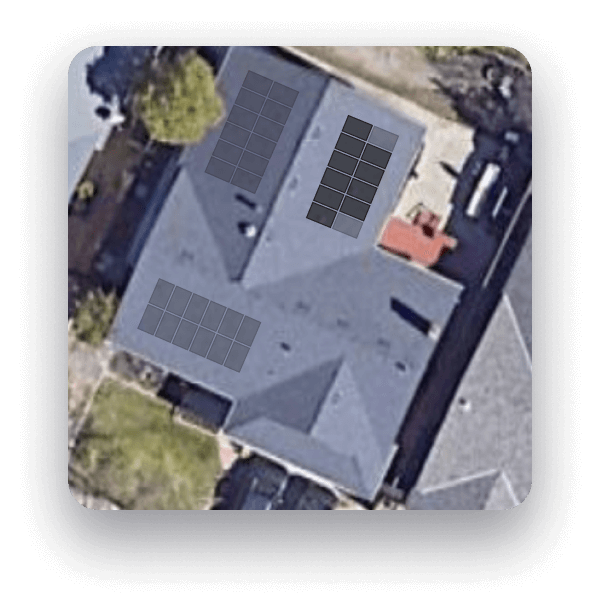For the second time this year, California homeowners are facing utility spikes.
It’s shaping up to be a cruel summer in California this year, with electricity rates about to spike for the second time this year.
Newsweek recently reported that California residents may see an extra $24 added to their electric bills starting this month (May). Despite many residents speaking out against the 20% rate increase, it looks like the California Public Utilities Commission (CPUC) still plans to move forward.
This is understandably frustrating for California homeowners. At the start of the year, Pacific Gas and Electric Co. increased residential electricity rates by about 20-percent. That price increase set homeowners back $34.50 each month.
It’s worth noting that California has some of the highest utility rates in the country. On top of that, California has experienced higher frequency (and length) of power outages in recent years.
If there was ever a time to invest in solar energy for your home, this is it.

Why Solar is a Smart Choice for California Homeowners
If you’re a homeowner in California looking to live more sustainably while saving money every month on electricity, investing in a solar system helps you rely less on the local grid and achieve energy independence.
1. It’s one of the sunniest states
California has long-since been associated with sunshine and all-around pleasant weather. The average annual sunlight is 5,050 kJ/m² and the average temperature is 61.7 °F. It’s also part of the ‘Sun Belt,’ which refers to an area in the U.S. that is known for its mild, year-round weather. The Sun Belt stretches from California in the southwest to Florida and Virginia in the southeast.

2. Electricity rates continue to rise
As we’ve already covered, California is set to be hit with another utility price hike. Even small increases can cause financial stress to households just trying their best to get by. While January’s increase of $34.50 might not sound like a lot, it totals an extra $414 for the full year. Electricity bills are already higher in the summer months, mostly due to running air conditioning units, so homeowners are likely to feel this price increase more than others.

3. Federal and state incentives are extensive
California homeowners are able to take advantage of several federal and state wide incentives for going solar. On a federal level, homeowners can receive a 30% tax credit on their installed PV systems.
Other incentives for California homeowners include:
- Solar Energy System Property Tax Exclusion: homeowners who install solar systems will not be taxed on the increase in value of their home.
- Single-Family Affordable Solar Housing (SASH) Program: an initiative that makes it more attainable for low-income single-family homeowners to go solar.
- The Net Energy Metering
(NEM) program – 3.0: a billing tool where homeowners can sell their excess energy to their utility company and receive credits they can use later on.
There are a few other incentives that are available to California homeowners and make solar not only more achievable but a smart financial investment.

4. Solar-powered homes in California increase in value
Studies show that homes with existing solar systems are an average of 4.1% more valuable than those without. When you consider that California is an in-demand state to live in, that small percent translates to thousands of dollars. Buyers are also more likely to pay above asking for a home that runs on solar because they know that their utility bills will be at 100% offset.

5. Access to a net metering program
If you’re new to net metering, the best way to wrap your head around it is to view it as one type of billing tool. California is one of several states that offer this program. In short, it allows homeowners to sell the excess energy their solar systems produce to their local utility company. In return, they receive credits that they can use later on–for example, to power their homes during a blackout or during the night.

How much can solar save you in California in 2024?
The short answer? Quite a lot. Below are two examples of California homeowners who chose to go solar with Monalee.
Monalee customer: Rajesh from Fremont, CA
There are so many factors that go into designing a solar system and the material of the roof is one of them. It turned out that many installation crews are not experienced in working with metal roofs and therefore, weren’t able to take on his project. Rajesh found Monalee by chance, and was thrilled to learn that his metal roof wasn’t a problem.
Our team designed a solar system that included 13 QCELL 400 solar panels and an Enphase iQ8+ inverter. In total, Rajesh paid $9,282 after federal tax incentives, ultimately saving him $2,784 compared to other quotes. Before going solar, Rajesh paid around $175 on utilities and after his installation, he pays just $12.

Monalee customer: Saqib from San Jose, CA
Unlike most of the homeowners we work with, Saqib‘s home was already running on solar when he contacted us. After his first installation, he realized that he wasn’t offsetting his electricity bill as much as he had hoped, and he asked us to add 16 QCELL 400 solar panels to his roof.
After federal incentives, Saqib paid $11,515 for his Monalee project, which was $8,290 less than what other traditional solar companies charge. He went from paying $300 per month to his utility company to just over $50.





























